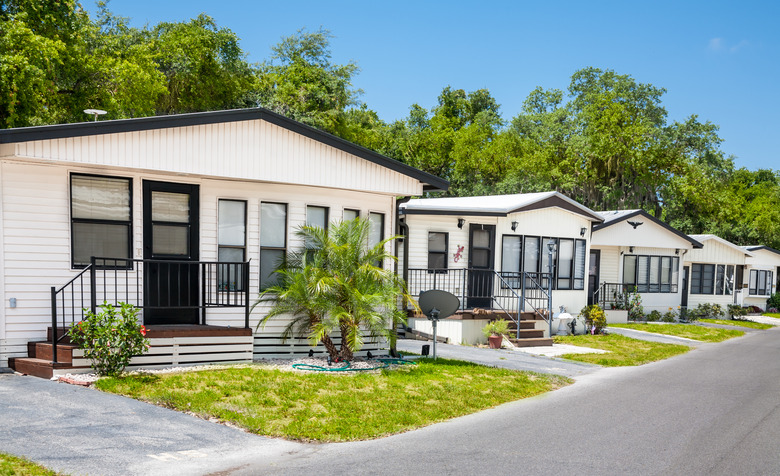Replacing Mobile Home Air Ducts
We may receive a commission on purchases made from links.
It costs about $35 to $55 per linear foot to replace mobile home ductwork, according to Mobile Home Friend. In a single-wide mobile home with 60 feet of ductwork, the cost would range from $2,100 to $3,300. A double-wide home with 110 feet of ductwork could run anywhere from $3,850 to $6,050. That's a pretty good incentive to do the job yourself, but it's going to mean crawling under the mobile home and working in tight quarters.
Because the ductwork is under the house, it's vulnerable to rodents and other pests who will happily take advantage of the warmth if they can find a way in. To prevent this, the ducts you install must be properly sealed and shouldn't touch the ground. Of course, if you don't want to go to all this trouble, you could try cleaning your ducts instead.
About Mobile Home Air Ducts
About Mobile Home Air Ducts
Mobile home ducting is manufactured from lightweight, galvanized sheet metal, and it has a flattened rectangular or oval cross-section to fit in the limited space under the floor. It's also possible to hang flexible metal ducting from the joists, and if that's the kind you already have, you'll want to use that kind again. Flexible ducting comes pre-insulated, which is a bonus because insulating galvanized ductwork is an extra step and expense, and it's necessary in cold climates. Pre-insulated fiberboard ducts will deteriorate in the exposed space under a mobile home and normally aren't an option.
The ductwork usually runs lengthwise underneath the mobile home, and if it is a double-wide home, there are usually two runs joined by a crossover duct. The joints between the main ducts and crossover ducts are especially vulnerable to leaks and pest incursion and must be sealed especially well.
Removing and Replacing Ductwork
Removing and Replacing Ductwork
There isn't much technique involved with removing old ductwork from under a mobile home. After pulling off the tape sealing the branch lines to the registers and the main line to the heat exchange plenum, you simply disengage the ductwork from the register fittings, unfasten the straps holding the ductwork to the floor joists and pull out the straps along with the ducts. Be careful if you see holes in the old ducts because rodents may still be living inside them, and you may also find nests full of debris, so be sure to wear a respirator and goggles.
To install the new ductwork, measure the distances and cut the ducts to length with tin snips. Install the appropriate duct adapters onto the registers (you can reuse the old ones if they are still in good condition) and seal them with aluminum tape. Assemble the duct pipes with tee fittings and elbows as needed, pushing the end of the pipes into the fittings and wrapping aluminum tape around each joint to secure it. Connect the ducts to the registers and plenum and support them with duct straps or hangers screwed to the joists. Be sure the straps are tight enough to keep the ductwork off the ground.
Sealing New Ductwork
Sealing New Ductwork
The places the ducts most need sealing are at the points where air has to make an abrupt turn because these points are where it's most likely to leak. Pay special attention to the joints of the crossover duct for a double-wide home, the termination cap at the end of the main duct and at the plenum and the boot for each register, which is the short length of duct that extends up to connect with the register. Some pros use mastic when connecting the ducts at these points, but it's messy, and you can get just as good a seal if you use aluminum tape carefully. Don't rely on ordinary duct tape; it won't last.
